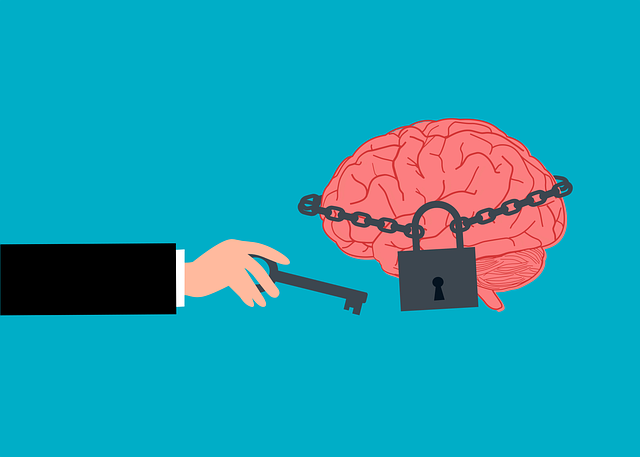Lone Tree EMDR Certified Therapy offers a holistic approach to well-being, combining positive thinking with Eye Movement Desensitization and Reprocessing (EMDR) techniques. This therapy enhances psychological health by reducing stress, improving mood, and increasing life satisfaction. Through self-awareness exercises and mindfulness practices, individuals learn to challenge negative thoughts and build resilience. Integrating positive affirmations and consistent habits like journaling and meditation empowers people to manage stress, make better decisions, and cultivate a more optimistic outlook, ultimately fostering emotional intelligence and trauma support.
“Unleash your inner resilience with positive thinking exercises, especially guided by Lone Tree EMDR Certified Therapy. This powerful tool has proven to transform lives by fostering mental well-being and enhancing overall happiness.
Our article delves into the science behind positive thinking, highlighting its profound impact on daily life. We provide a comprehensive guide to implementing an effective exercise, offering step-by-step instructions for beginners. Furthermore, we explore the lasting benefits and share valuable tips to maintain a positive mindset, ensuring you can thrive in all aspects of life.”
- Understanding Positive Thinking and its Impact
- The Role of Lone Tree EMDR Certified Therapy
- Implementing the Exercise: A Step-by-Step Guide
- Benefits and Tips for Sustaining a Positive Mindset
Understanding Positive Thinking and its Impact

Positive thinking is a powerful tool that can transform lives. It involves cultivating optimistic attitudes and beliefs, focusing on personal growth, and interpreting experiences in a positive light. This mental shift has profound effects on both psychological and physiological well-being. Research suggests that individuals who engage in positive thinking exercises experience reduced stress levels, improved mood, and enhanced overall life satisfaction. By fostering self-awareness, these practices enable people to challenge negative thought patterns and build resilience.
For those seeking comprehensive support, Lone Tree EMDR Certified Therapy offers specialized techniques to enhance self-esteem improvement and conflict resolution skills through self-awareness exercises. These therapies provide individuals with the tools to navigate life’s challenges more effectively, promoting a sense of calm and empowerment. By integrating positive thinking into daily routines, people can create a more fulfilling and balanced lifestyle.
The Role of Lone Tree EMDR Certified Therapy

Lone Tree EMDR Certified Therapy offers a powerful approach to positive thinking and emotional healing. Eye Movement Desensitization and Reprocessing (EMDR) is a therapeutic technique that helps individuals process traumatic memories and negative beliefs, replacing them with more adaptive thoughts and emotions. This certified therapy is particularly effective for those seeking trauma support services, as it facilitates profound shifts in perspective.
By combining bilateral stimulation, such as side-to-side eye movements or tactile taps, with guided cognition, EMDR helps clients access and reprocess traumatic memories stored in the brain. This process allows for the development of coping skills that go beyond simple avoidance or suppression, enabling individuals to regain control over their emotional responses. Moreover, healthcare providers can benefit from EMDR as a burnout prevention strategy, as it empowers them to address underlying emotional issues while promoting resilience.
Implementing the Exercise: A Step-by-Step Guide

Implementing a positive thinking exercise like that offered by Lone Tree EMDR Certified Therapy can be a transformative process. Here’s a step-by-step guide to help you integrate this practice into your daily routine:
1. Set Clear Intentions: Begin by defining your goals for the exercise. Are you looking to enhance your mood management, improve self-care routine development for better mental health, or cultivate a more positive outlook? Setting clear intentions will guide your practice and make it more impactful.
2. Find a Quiet Space: Create a peaceful environment free from distractions. This could be in the comfort of your home, a quiet corner at work, or even during a short walk in nature. A tranquil setting facilitates deeper engagement with your thoughts and emotions.
3. Prepare Mentally: Take a moment to center yourself. Close your eyes and take a few deep breaths. Allow any stresses or worries to melt away as you prepare to focus inward.
4. Engage Your Senses: Engage in sensory-based techniques like mindfulness meditation, where you pay attention to your sights, sounds, smells, tastes, and tactile sensations. This can help anchor you in the present moment and enhance your experience of positive thinking.
5. Identify Positive Affirmations: Choose affirmations that resonate with you. These could be simple statements like “I am worthy,” “I deserve happiness,” or “I embrace positivity.” Repeat these affirmations to yourself, letting them sink in and reshape your mindset.
6. Practice Regularly: Incorporate this exercise into your daily routine. Consistency is key; even a few minutes each day can make a significant difference over time. Consider setting reminders or dedicating a specific time slot for your practice.
7. Reflect and Adjust: After each session, take a moment to reflect on your experience. Note what worked well and areas where you might need to adjust your approach. This reflective practice allows you to fine-tune your method, tailoring it to best suit your needs.
By following these steps, you can effectively implement a positive thinking exercise that supports mood management and enhances your overall self-care routine development, ultimately contributing to better mental health outcomes with the guidance of a healthcare provider skilled in cultural competency training.
Benefits and Tips for Sustaining a Positive Mindset

Maintaining a positive mindset offers numerous benefits for mental health and overall well-being. Regular practice can enhance resilience, improve stress management, and foster better decision-making abilities. Studies have shown that positive thinking exercises, such as those utilized in Lone Tree EMDR Certified Therapy, can be powerful tools to navigate life’s challenges. This therapeutic approach encourages individuals to challenge negative thought patterns, thereby promoting emotional regulation and intelligence—key components in trauma support services.
To sustain this mindset shift, it’s essential to incorporate consistent practices. One effective tip is to practice gratitude by reflecting on positive experiences daily. Additionally, mindfulness exercises like meditation can help calm the mind and enhance emotional awareness. Encouraging social connections and engaging in activities that bring joy are also vital for maintaining a positive outlook. These strategies not only support emotional well-being but also empower individuals to face life’s curveballs with greater equanimity.
Positive thinking exercises, guided by Lone Tree EMDR Certified Therapy, offer a powerful tool for cultivating a more optimistic mindset. By following a structured approach, as outlined in this guide, individuals can effectively navigate their thoughts and emotions, leading to improved well-being. The benefits are substantial, from enhanced resilience to increased life satisfaction. Remember, sustainability is key; regular practice and a willingness to embrace change will ensure the long-term cultivation of a positive mindset.














